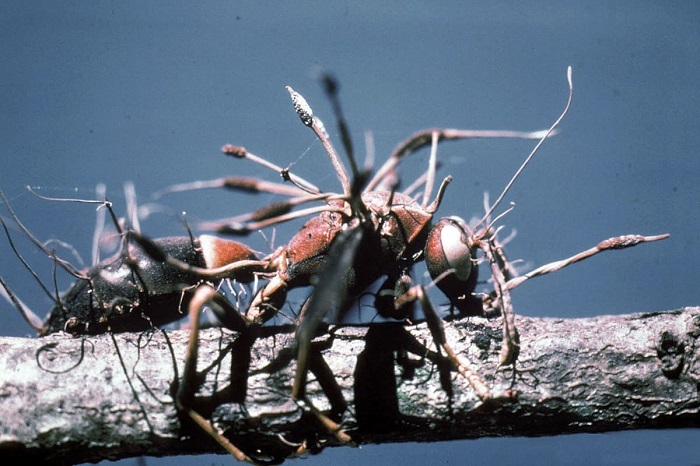ISABEL RUBIO ARROYO | Tungsteno
In the first scene of the hit series The Last of Us, Dr Neuman warns of a possible threat that keeps him awake at night: fungi. Interviewed in a television programme recorded in 1968, the epidemiologist says that these organisms "cannot survive if its host’s internal temperature is over 34 degrees. And currently, there are no reasons for fungi to evolve to be able to withstand higher temperatures. But what if that were to change? What if, for instance, the world were to get slightly warmer? Well, now there is reason to evolve," he says.
More fungal diseases on a warming planet
"The incidence and geographic range of fungal diseases are both expanding worldwide due to global warming and the increase of international travel and trade," says the World Health Organization. Currently, most fungal species cannot reproduce at human body temperature (about 37 degrees Celsius or 98.6 degrees Fahrenheit). Arturo Casadevall, a microbiologist specialising in fungal infections at the Johns Hopkins School of Public Health, told ScienceNews that fungi don't infect us more often because "the world is much colder than we are, and they have no need of us."
But as the planet warms, "these strains either have to die or adapt," the microbiologist points out and Dr Neuman warns in The Last of Us. While some argue that the planet has not warmed enough for fungi to be a problem, Casadevall believes that we need to think about the warmer days that will come with climate change. Each of these will be a "selection event" in which many fungi will die, but others will mutate to survive and there may come a time when human body temperature is no longer a challenge.
In fact, climate change may have allowed a deadly fungus called Candida auris to acclimatise to human body temperature, according to Casadevall. Between 2012 and 2015, pathogenic versions emerged in Africa, Asia and South America. "It came out of nowhere," he told National Geographic magazine. The expert believes that "this fungus was out there, and over the years it adapted to higher temperatures until it could break through."

The Cordyceps fungus can infect insects such as ants and wasps. Credit: US Forest Service / Wikimedia Commons
Could the fungus in ‘The Last of Us’ infect humans?
The series The Last of Us is based on a fungus that exists in real life. It is Ophiocordyceps unilateralis, also known as Cordyceps, and it infects insects such as ants. Scientists believe the parasite takes physical control of its host by growing fungal cells around the brain that hijack the insect's nervous system to control its muscles.
In the series, humans try to survive after this type of fungus turns people into zombies. But could this really happen to humans? "In a fantastical way, the logical links are there, but it's not likely to happen in real life," Ian Will, a fungal geneticist at the University of Central Florida, told National Geographic.
João Araújo, an expert on parasitic fungi at the New York Botanical Garden, explains that "if the fungus really wanted to infect mammals, it would require millions of years of genetic changes." Normally, each fungal species has evolved to adapt to a specific insect. "If a jump from an ant species is hard, to jump to humans—that’s definitely sci-fi," says Will.
In The Last of Us, humans try to survive after a fungus turns people into zombies. Credit: HBO Max
A pandemic threat?
While some experts, such as Norman Van Rhijn, a mycologist who studies fungal infections at the University of Manchester, believe a fungal pandemic as possible, others are not so sure. David Hughes, a Cordyceps specialist and scientific advisor on the video game The Last of Us, does not see fungi as posing a pandemic threat. "The extent to which we will see a pandemic, meaning the whole world is affected by a single species ... that doesn't seem probable for fungi, just by nature of their transmission pathways," he told Business Insider. He explains that fungal infections are largely spread through touch or surfaces.
Although their opinions differ, experts do agree on one thing: temperature plays an important role in fungal infections. What will happen in the fungal kingdom is still uncertain. For Tom Chiller, chief of the fungal disease branch of the US Centers for Disease Control and Prevention, one thing is clear: "The potential is huge for what can emerge and become a pathogen." "I am not going to be surprised that more fungi emerge as human pathogens, that become more challenging to treat and more infectious," he concludes.
· — —
Tungsteno is a journalism laboratory to scan the essence of innovation.
